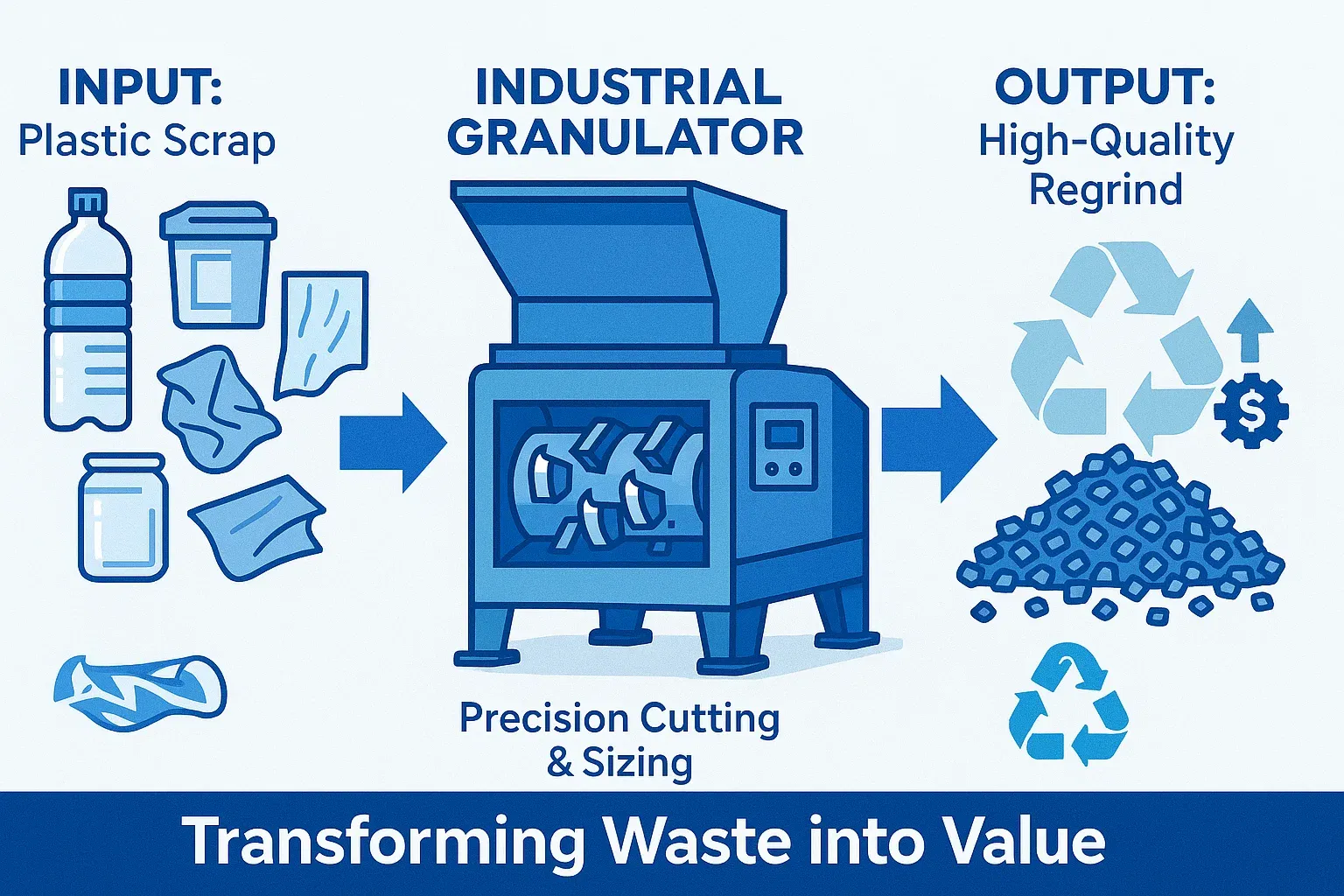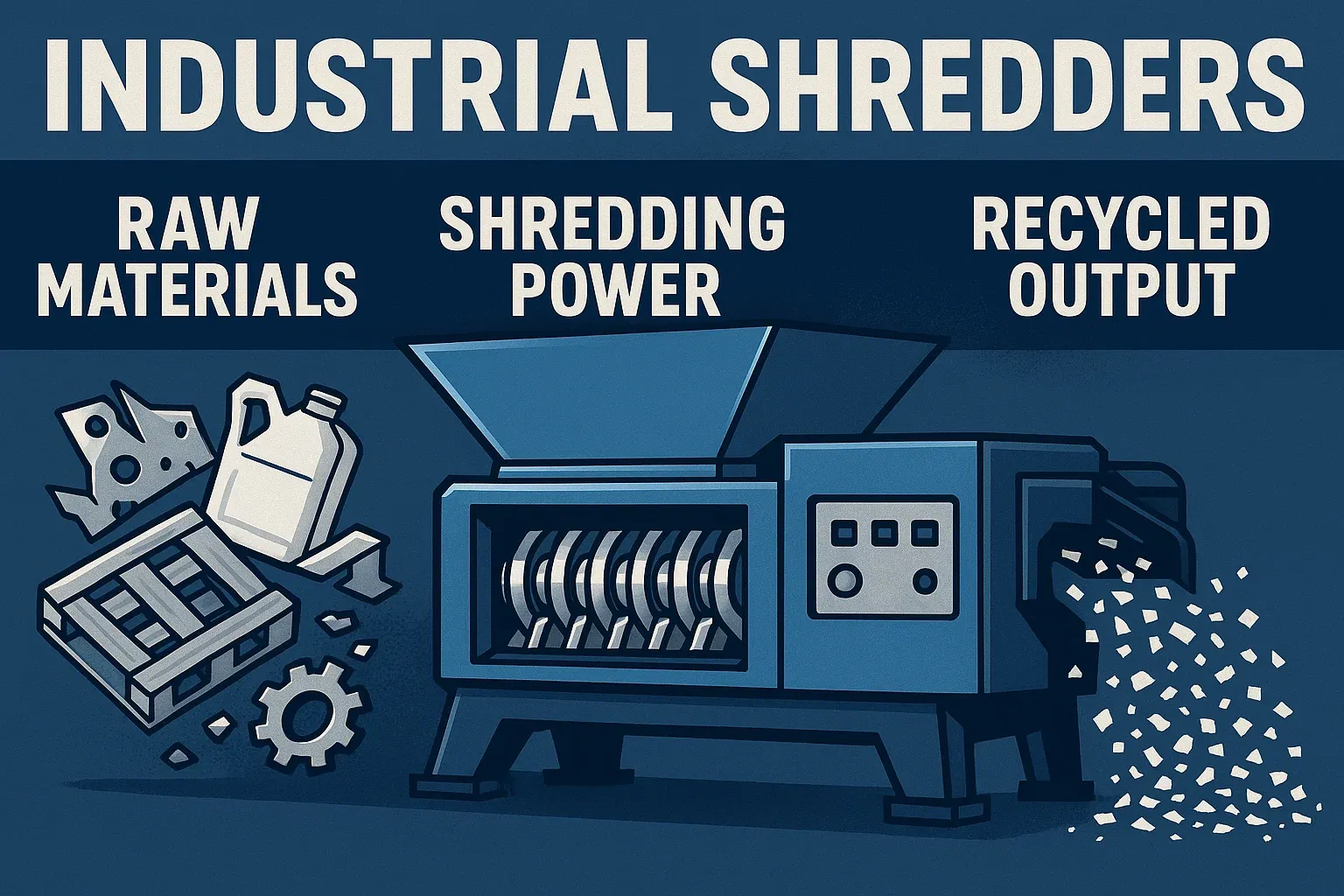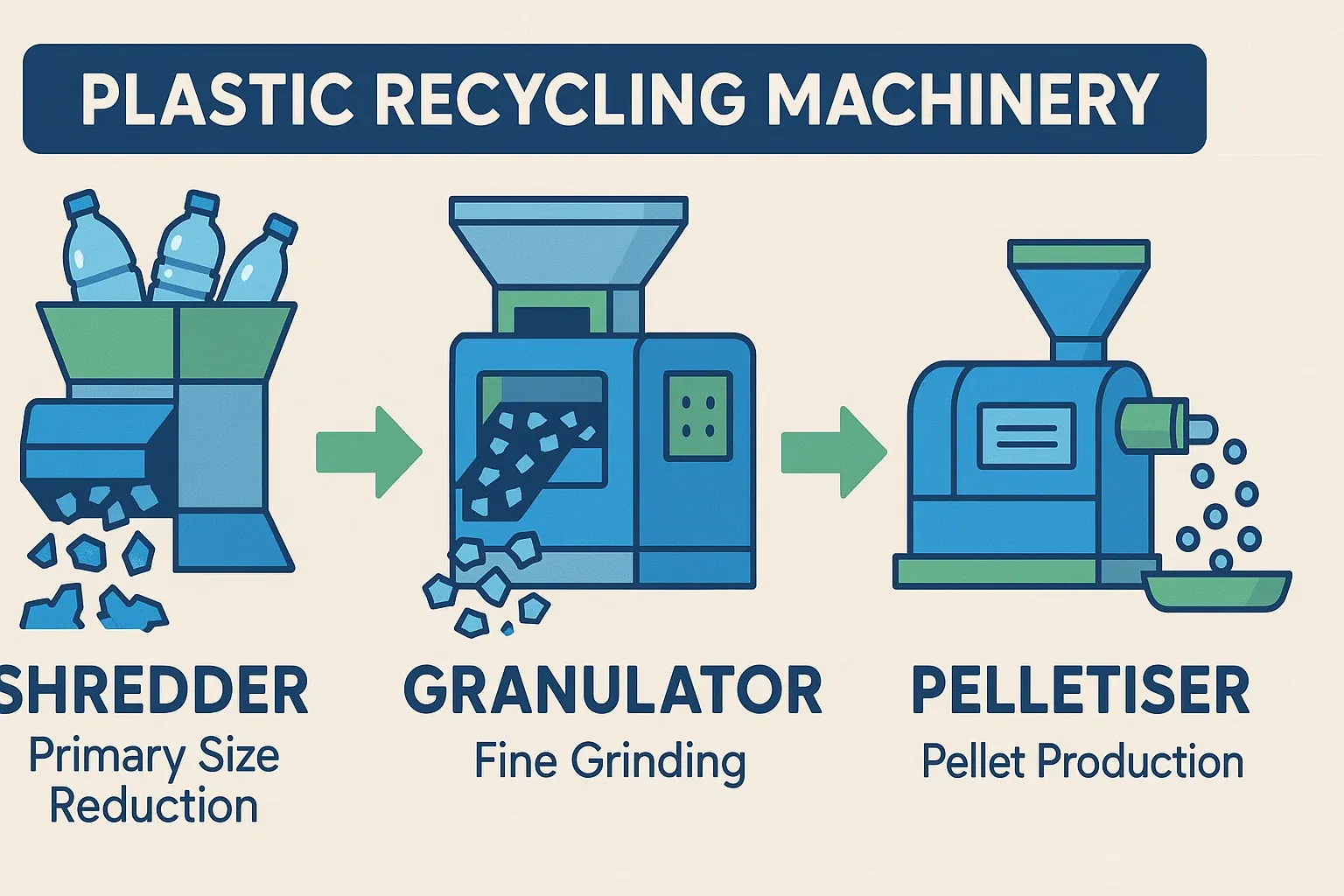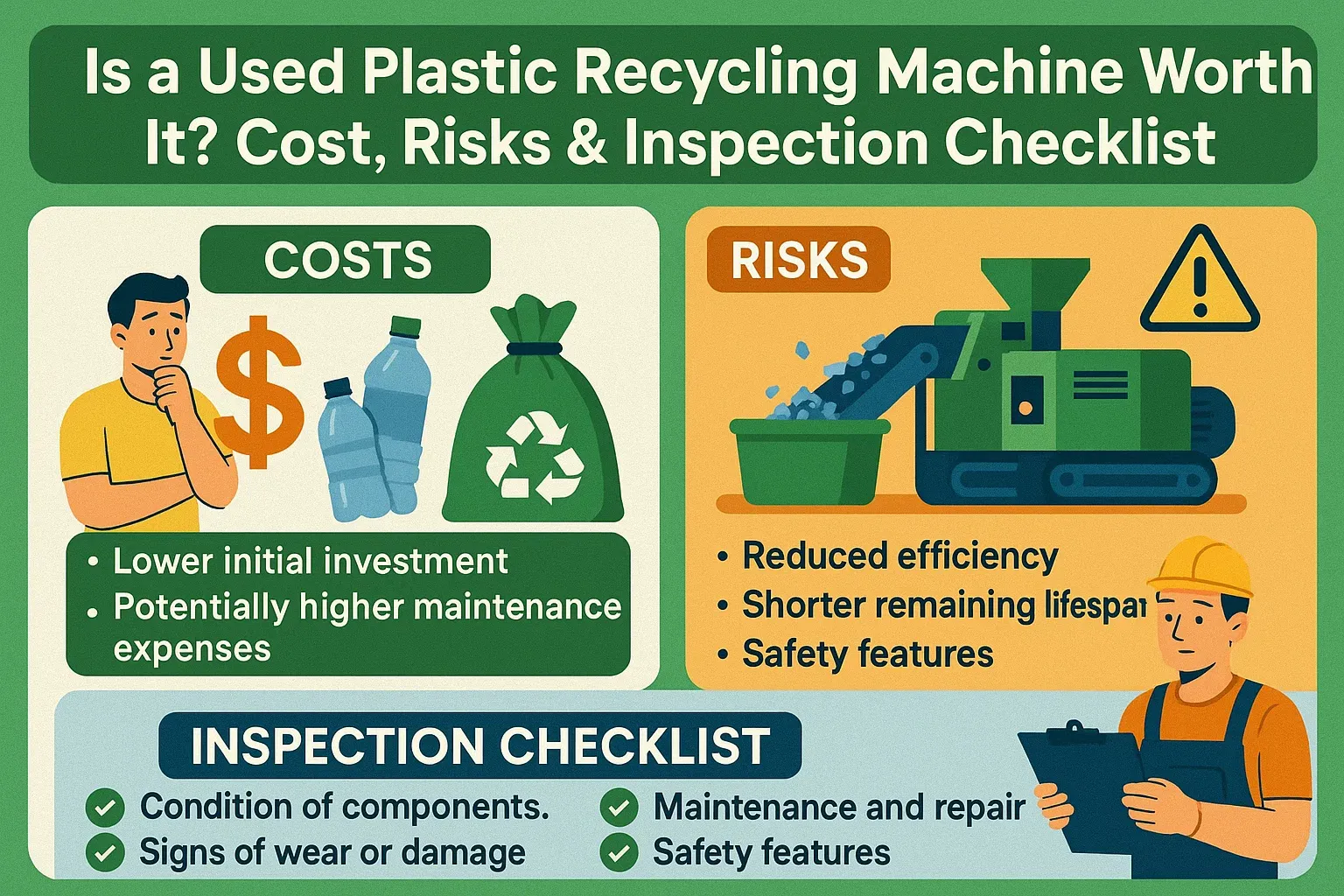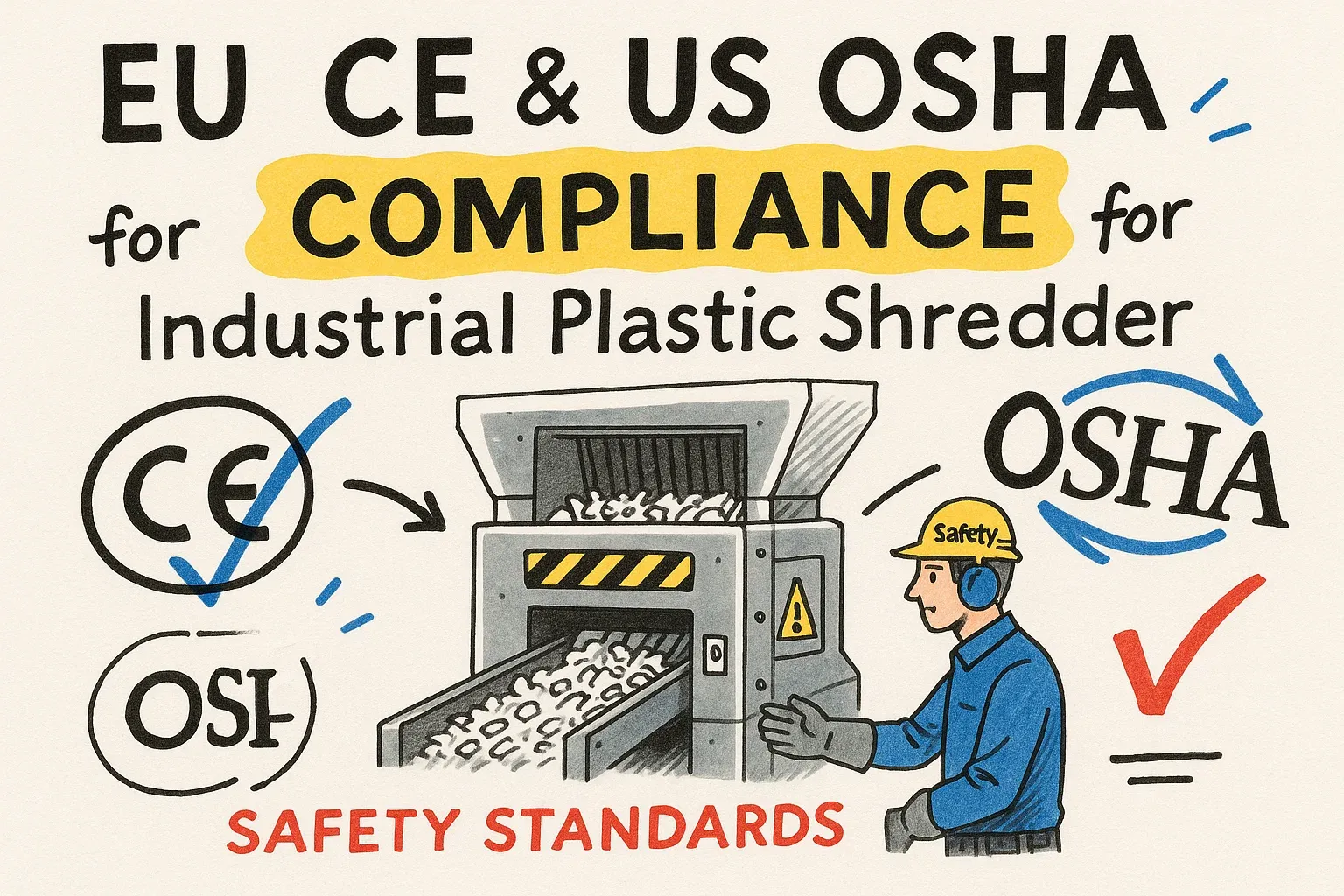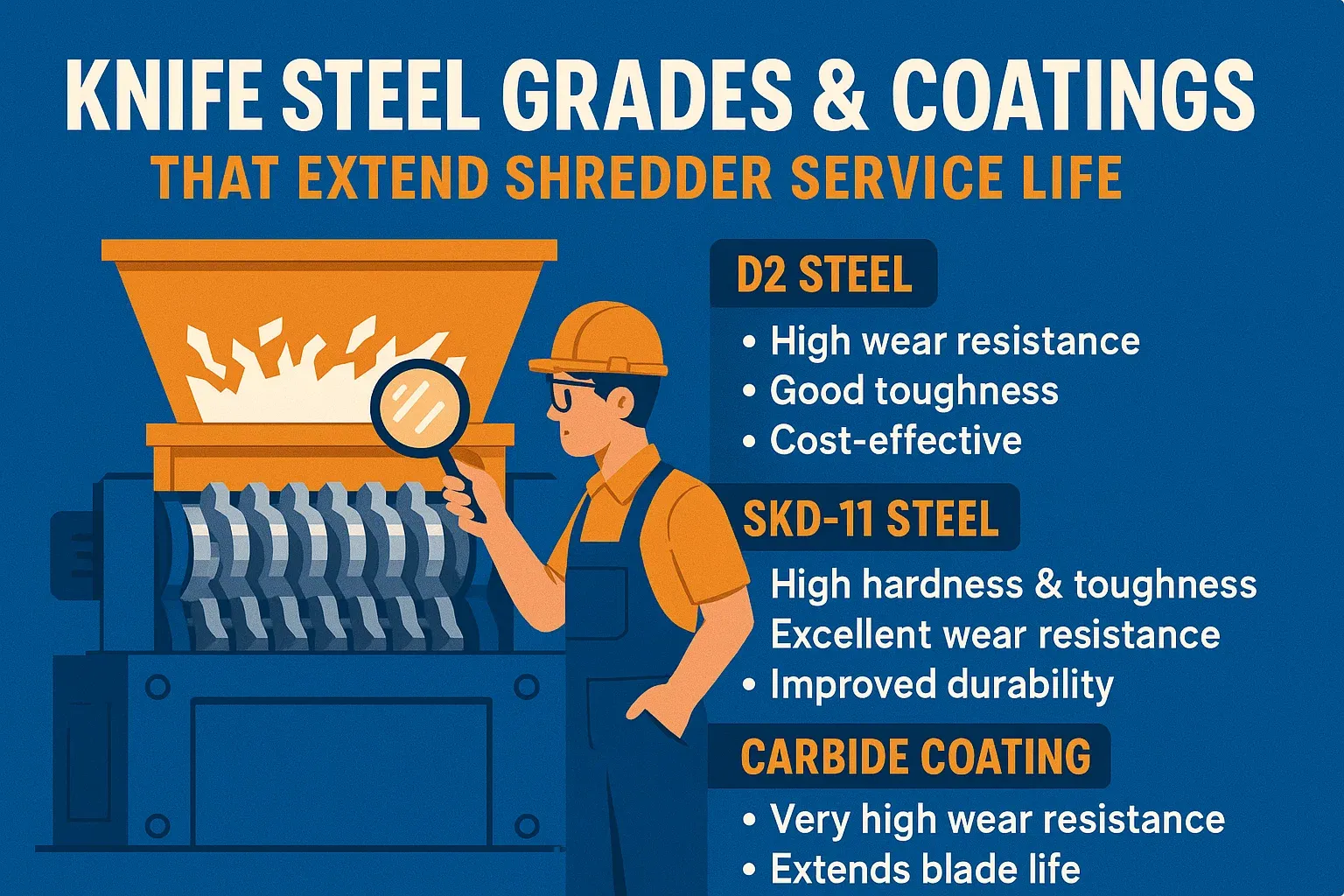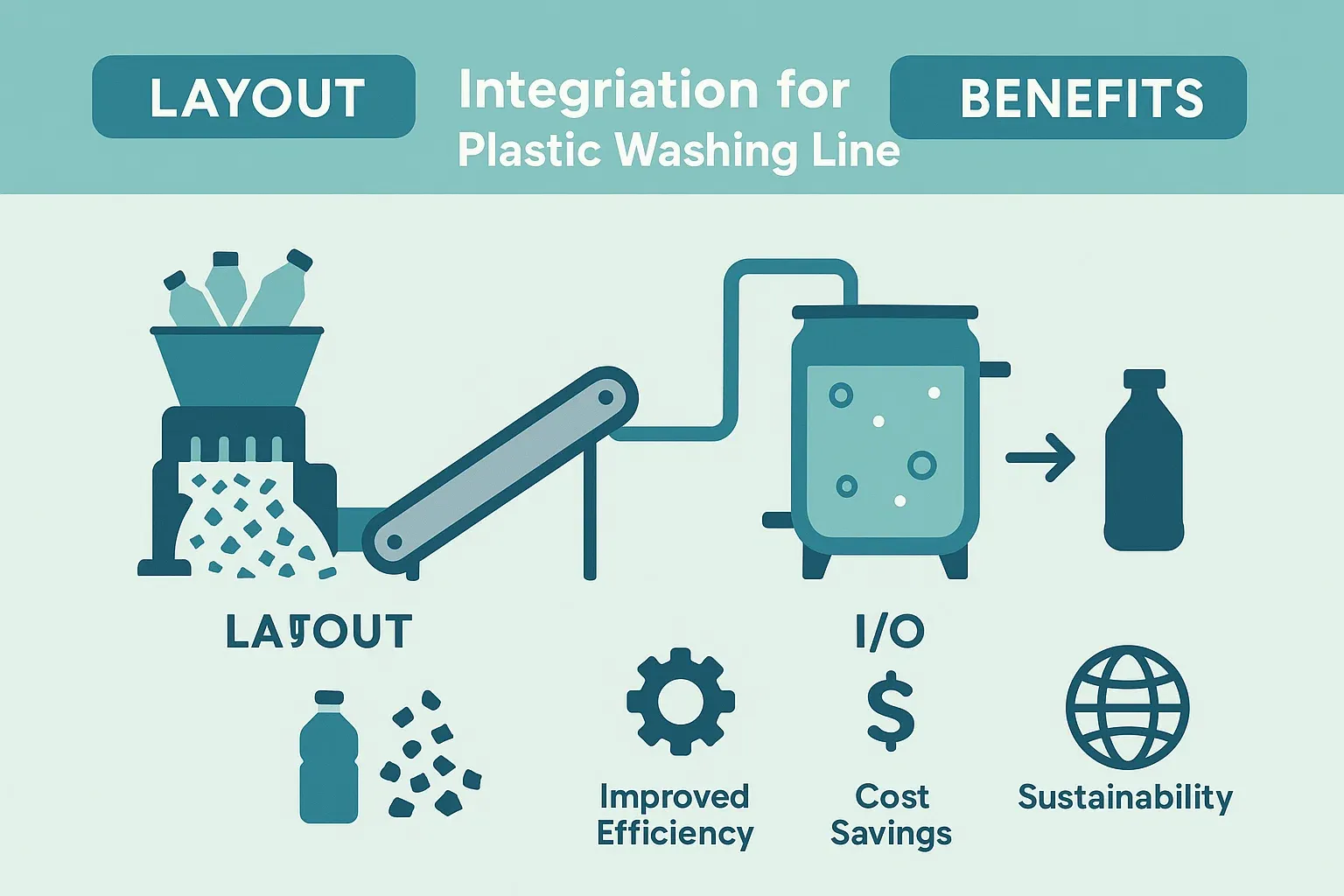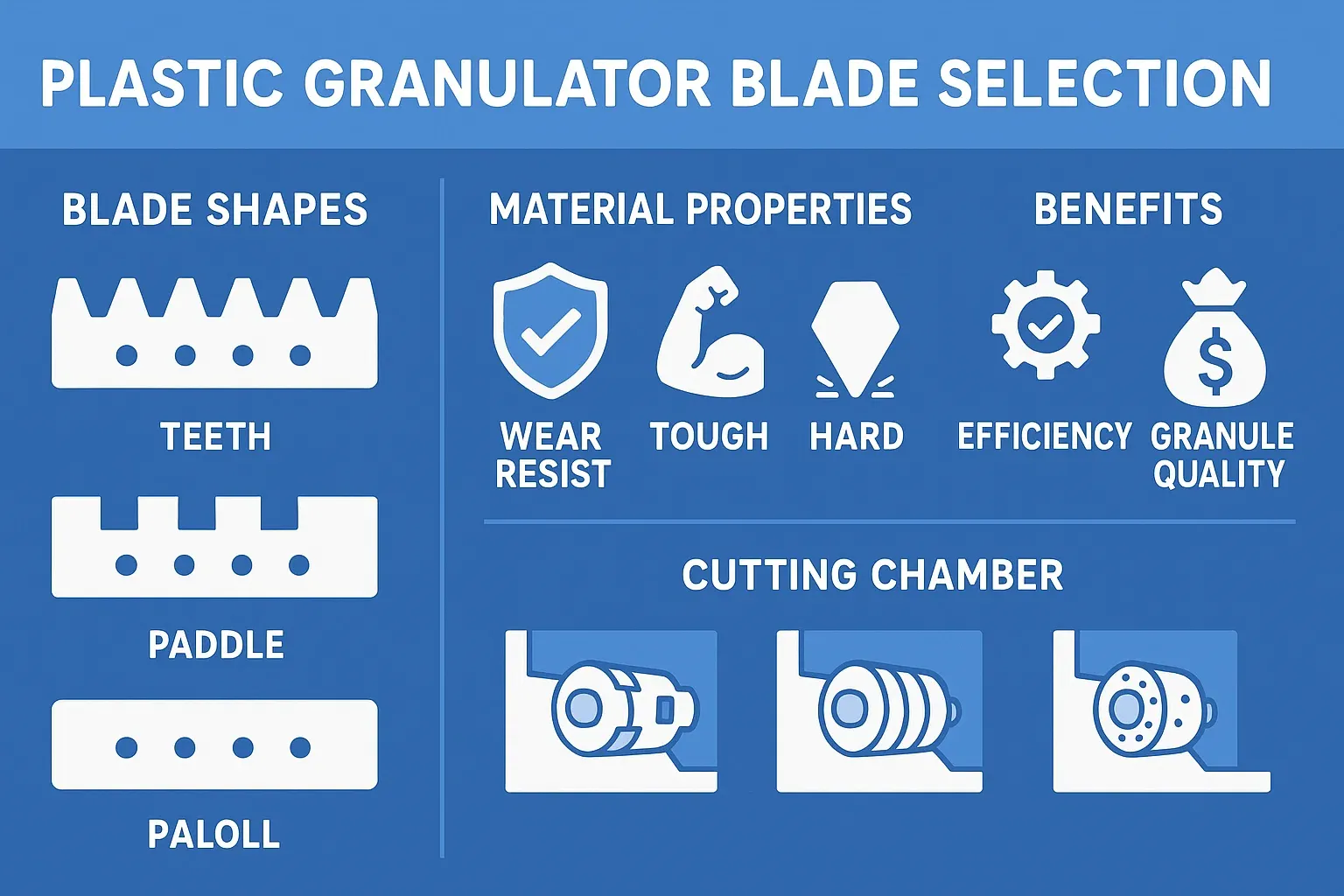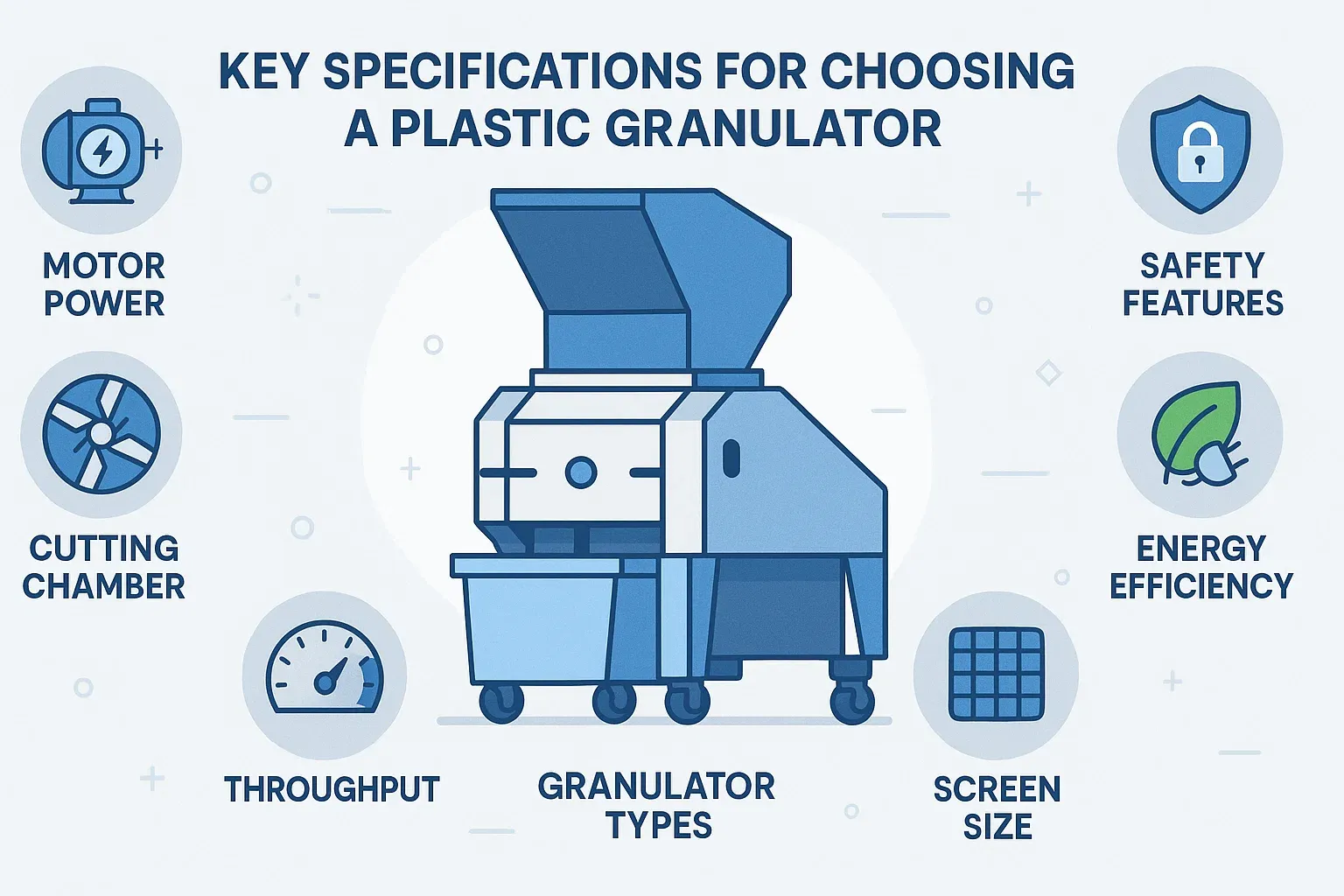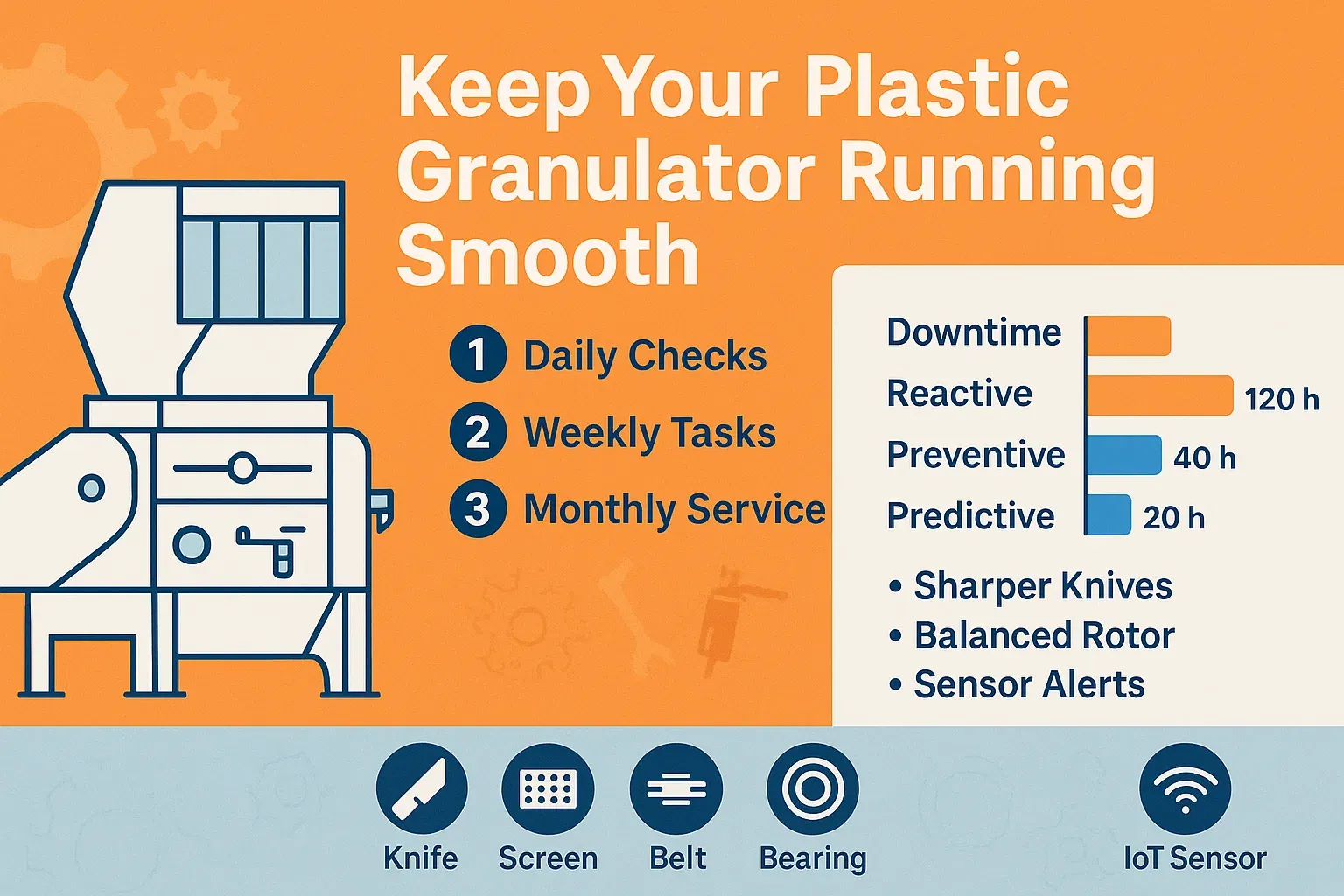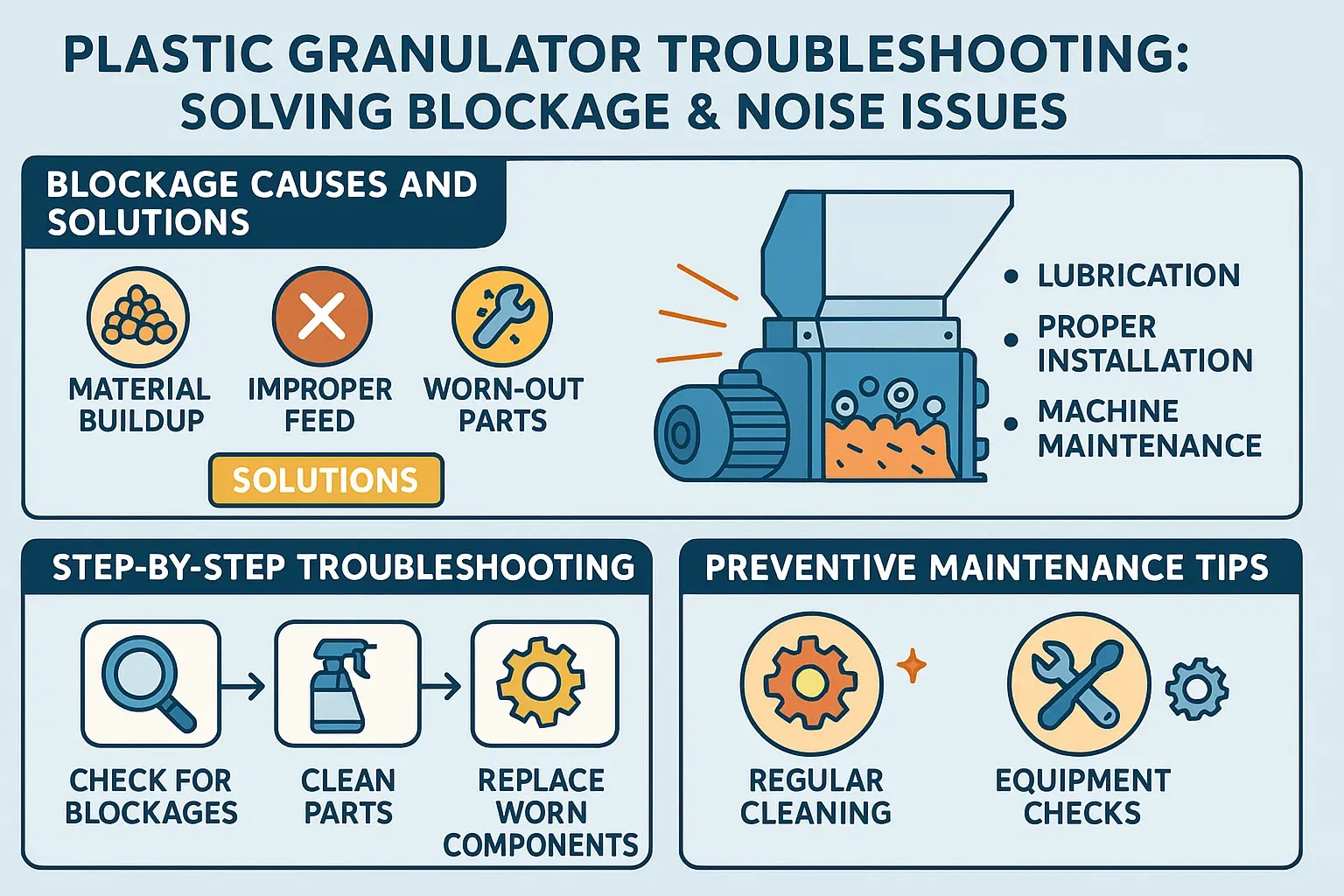Recycling News
Categories Recycling News
Posted on
Explore the world of industrial granulators, also known as plastic granulators or grinders. Learn how these machines achieve precision size reduction of plastics into valuable regrind, their key components, types, and crucial role in the circular economy and plastics recycling.
Categories Recycling News
Posted on
Learn about industrial shredders, their operation principles, different types, and applications in recycling and waste management.
Categories Recycling News
Posted on
Unlock efficiency in your plastic recycling operations. This guide clearly defines the roles of shredders, granulators, and pelletisers, compares their key differences, and explains how they work together. Make informed decisions for your recycling line.
Categories Recycling News
Posted on
Is investing in a used plastic recycling machine a smart financial move or a potential pitfall? This guide helps industrial purchasers and engineers weigh the costs, understand the risks, and provides a crucial inspection checklist for making an informed decision on used recycling equipment.
Categories Recycling News
Posted on
Discover how to navigate EU CE and US OSHA compliance for industrial plastic shredders. This guide covers regulations, safety features, and practical tips to ensure safe, efficient operations for engineers and equipment purchasers.
Categories Recycling News
Posted on
Discover why D2 and SKD-11 steels, enhanced with tungsten-carbide coatings, are the go-to choices for durable shredder knives. This guide explains key material properties, wear-resistance advantages, and maintenance tips that help engineers and buyers keep their shredding lines running longer and leaner.
Categories Recycling News
Posted on
Shredding difficult materials such as car seats and fiber-reinforced plastics requires specialized equipment. Learn about the challenges these materials present and the most efficient shredding solutions, including double-shaft and high-torque shredders.
Categories Recycling News
Posted on
Boost your plastic washing line's productivity by integrating a plastic shredder. This guide covers crucial layout planning, I/O system integration, and performance checks to ensure seamless material flow, reduce costs, and produce higher quality recycled plastic.
Categories Recycling News
Posted on
Selecting the right plastic granulator blades significantly impacts efficiency and operational costs. This guide covers key selection factors including blade material, blade design (teeth, staggered, paddle), and cutting chamber configuration to help you optimize throughput, improve granule quality, and minimize maintenance expenses in your plastic recycling or processing operations.
Categories Recycling News
Posted on
When selecting a plastic granulator, it's crucial to evaluate key technical specifications to ensure the equipment meets your operational needs. This guide covers the top 10 factors industrial buyers should consider.
Categories Recycling News
Posted on
Well-maintained plastic granulators run cooler, cut cleaner and save thousands in unplanned stops. This guide breaks down daily checks, monthly tasks and smart sensor upgrades that keep your regrind line humming—whether you’re an equipment buyer, plant engineer or hands-on technician.
Categories Recycling News
Posted on
This article focuses on troubleshooting common issues encountered during the operation of plastic granulators, specifically addressing problems related to material blockages and excessive noise. It covers potential causes for these issues and provides effective solutions to help users quickly diagnose and resolve faults, ensuring the equipment runs smoothly and efficiently.



